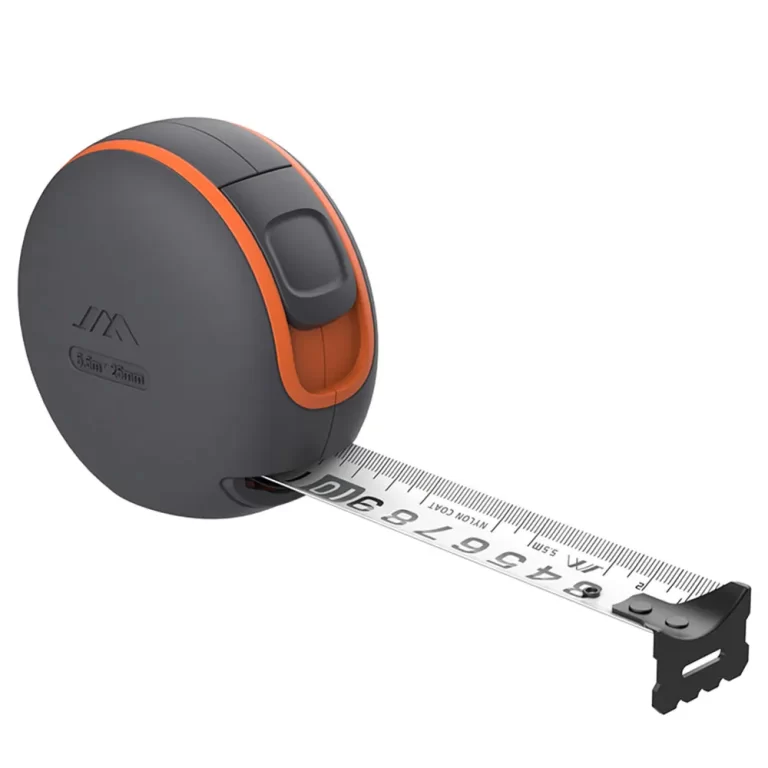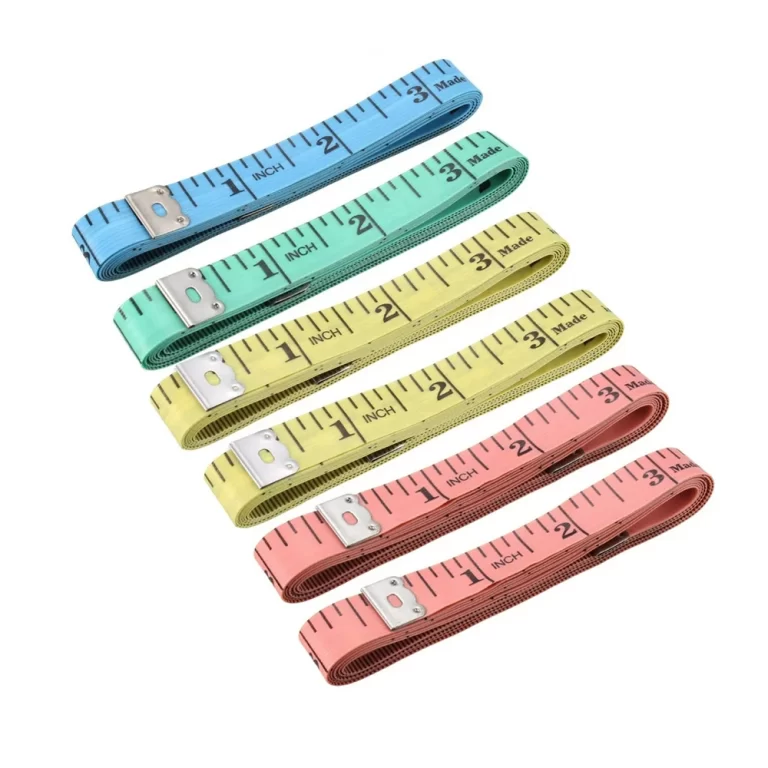
Guide to Body Tape Measure: Measuring for Fit and Fitness
Accurate body measurements are essential for various purposes, including tailoring, fitness tracking, and health assessments. A reliable body tape measure serves as an indispensable tool in achieving precision. Whether you’re a professional tailor, a fitness enthusiast, or someone keen on monitoring health metrics, understanding how to select and use a body tape measure effectively can significantly enhance your measurement accuracy. This guide explores the different aspects of body tape measures, offering insights into their types, proper usage techniques, and maintenance tips to ensure longevity and reliability.
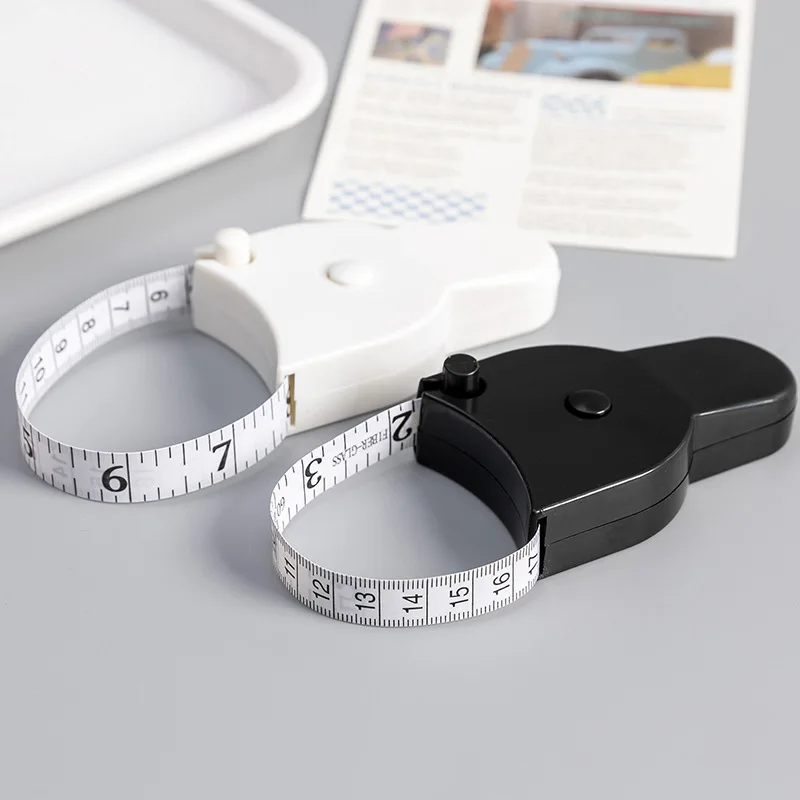 Understanding Body Tape Measures
Understanding Body Tape Measures
What is a Body Tape Measure?
A body tape measure is a flexible measuring tool specifically designed to measure different parts of the human body. Unlike rigid rulers, body tape measures can contour around curves and provide accurate measurements for areas such as the waist, hips, chest, and limbs. Typically made from materials like fiberglass or cloth with printed measurement markings, these tapes cater to various applications, from garment creation to health monitoring.
Importance of Accurate Body Measurements
Accurate body measurements are crucial for several reasons. In tailoring, precise measurements ensure that clothing fits perfectly, enhancing comfort and appearance. For fitness enthusiasts, tracking body measurements over time helps monitor progress and adjust workout routines accordingly. In the healthcare sector, body measurements are used to assess patient health and diagnose potential issues. Therefore, having a reliable body tape measure is fundamental in achieving these accurate results.
Types of Body Tape Measures
Fiberglass Tape Measures
Fiberglass tape measures are known for their durability and flexibility. Made from fiberglass strands coated with plastic, these tapes do not stretch, ensuring consistent accuracy. They are often used in professional settings like tailoring and fitness centers due to their reliability and ease of use.
Cloth Tape Measures
Cloth tape measures are lightweight and flexible, making them ideal for measuring intricate body curves. Typically made from cotton or polyester, these tapes are marked with bold numbers and symbols for easy reading. They are commonly used in sewing and crafting as well as personal fitness tracking.
Digital Body Tape Measures
Digital body tape measures incorporate electronic features to enhance measurement accuracy. These devices often include digital displays that show measurements in various units, making it easier to track and record data. Some advanced models connect to smartphones or computers, allowing for seamless data management and analysis.
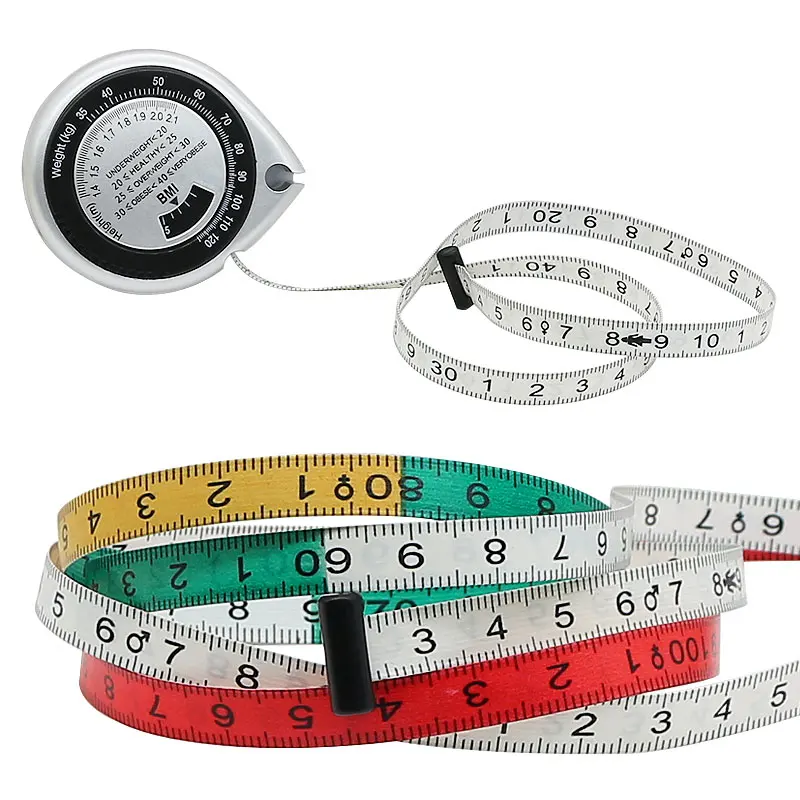 How to Choose the Right Tape Measure
How to Choose the Right Tape Measure
Consider the Material
When selecting a body tape measure, the material is a critical factor. Fiberglass tapes are highly durable and resistant to stretching, making them suitable for professional use. Conversely, cloth tapes offer greater flexibility and comfort for personal use. Digital tapes provide enhanced functionality but may require batteries and additional maintenance.
Measurement Units
Body tape measures come with different measurement units, typically centimeters, inches, or both. Choose a tape that aligns with your preferred unit of measurement. Dual-unit tapes offer versatility, allowing you to switch between measurements with ease, which is particularly useful for international use.
Length and Width
The length of the tape measure should accommodate various body sizes. Standard length tapes range from 150 cm (59 inches) to 200 cm (79 inches). Ensure that the tape is wide enough to provide clear visibility of the measurements without being cumbersome to handle. A width of 1 cm (0.39 inches) is generally sufficient for most purposes.
Durability and Quality
Investing in a high-quality body tape measure ensures longevity and consistent performance. Look for tapes with reinforced edges, durable materials, and clear, fade-resistant markings. High-quality tapes withstand frequent use and maintain their accuracy over time, making them a worthwhile investment.
Proper Usage Techniques
Preparing for Measurement
Before taking measurements, ensure that the tape measure is clean and free from bends or kinks. Stand straight and breathe normally to avoid altering your natural body posture. Wear minimal or form-fitting clothing to get the most accurate measurements.
Common Measurement Points
- Waist: Measure the narrowest part of your torso, typically just above the belly button. Ensure the tape is parallel to the ground and snug but not tight.
- Hips: Measure the fullest part of your hips and buttocks, keeping the tape level and parallel to the ground.
- Chest: Wrap the tape around the fullest part of your chest, ensuring it is straight and not too tight.
- Arms and Legs: Measure the circumference of your arms and legs at relaxed positions to get accurate girth measurements.
- Neck and Shoulders: For specific applications like shirt making, measure around the neck and the distance across your shoulders.
Taking Accurate Measurements
To achieve precision, it’s essential to keep the tape level and ensure it’s snug but not compressing the skin. Use a mirror or have someone assist you to verify that the tape measure is correctly positioned. Take each measurement multiple times to confirm consistency and accuracy.
Recording and Tracking Measurements
Keeping a record of your measurements helps in tracking progress over time. Use a notebook, digital app, or spreadsheet to log your data regularly. This practice is especially beneficial for fitness goals, tailoring needs, or health assessments, as it allows you to observe trends and make informed decisions based on your measurements.
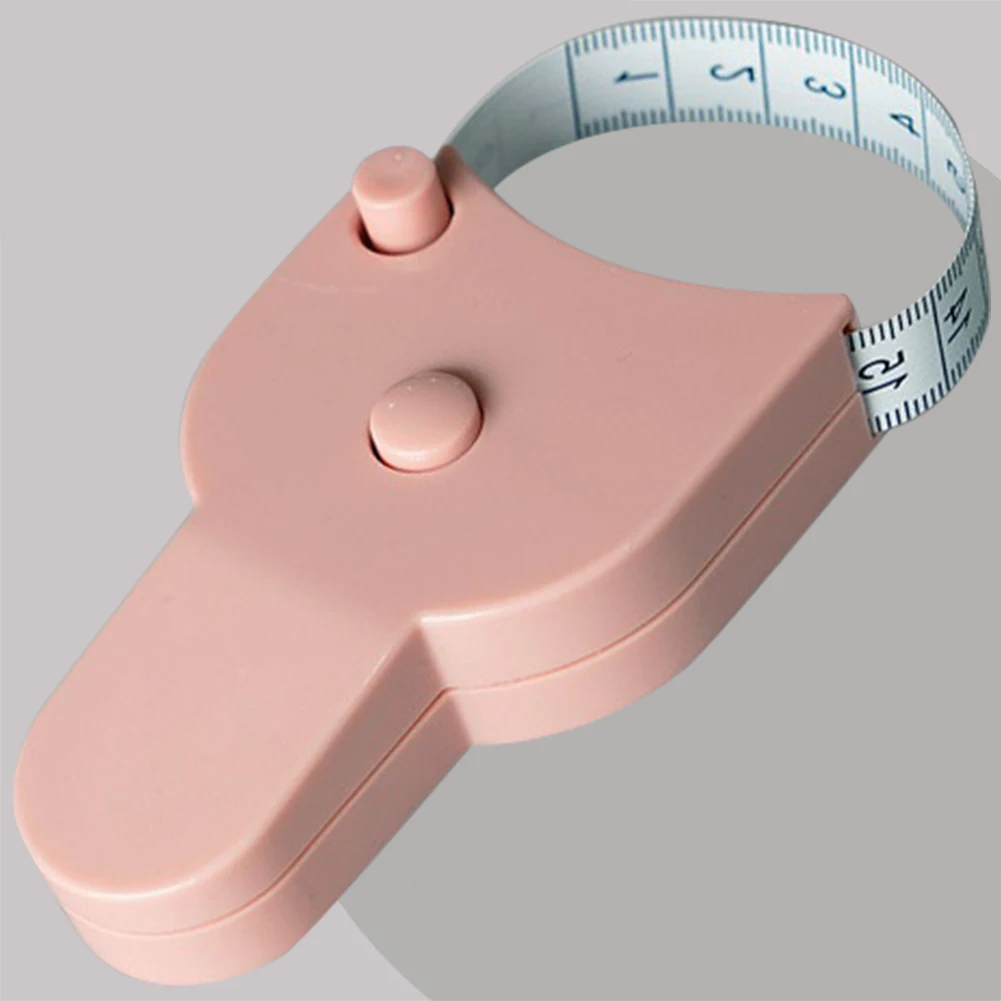 Maintenance Tips
Maintenance Tips
Cleaning and Storage
Regularly clean your body tape measure to maintain its accuracy and longevity. For fiberglass tapes, simply wipe them with a dry cloth. Cloth tapes can be gently hand-washed with mild detergent and air-dried to prevent stretching or damage. Store the tape in a cool, dry place away from direct sunlight to avoid fading and degradation of materials.
Inspecting for Wear and Tear
Periodically check your tape measure for signs of wear and tear, such as faded markings, tears, or kinks. Damaged tapes can lead to inaccurate measurements, so replace them if they show significant signs of wear. Maintaining your tape in good condition ensures reliable performance and accurate results.
Calibration of Digital Tapes
If you use a digital body tape measure, ensure that it remains calibrated. Follow the manufacturer’s instructions for calibration and battery replacement to keep the device functioning correctly. Regular maintenance of digital features enhances their accuracy and usability over time.
Benefits of Using a Tape Measure
Enhanced Accuracy
A body tape measure provides more accurate measurements compared to other methods like using a regular ruler. Its flexibility allows it to contour around the body, accounting for natural curves and ensuring precise circumference measurements.
Versatility in Applications
Body tape measures are versatile tools used in various fields, including fashion, fitness, and healthcare. Tailors use them for garment creation, fitness enthusiasts track their progress, and healthcare professionals assess patient health metrics, demonstrating the tape’s broad applicability.
Convenience and Portability
Body tape measures are lightweight and portable, making them easy to carry and use anywhere. Whether you’re at home, at the gym, or in a professional setting, having a tape measure on hand ensures you can take accurate measurements whenever needed.
Cost-Effective Tool
Investing in a quality body tape measure is cost-effective, as it provides long-term benefits without frequent replacements. Compared to digital devices or other measurement tools, tape measures offer a reliable and affordable solution for accurate body measurements.
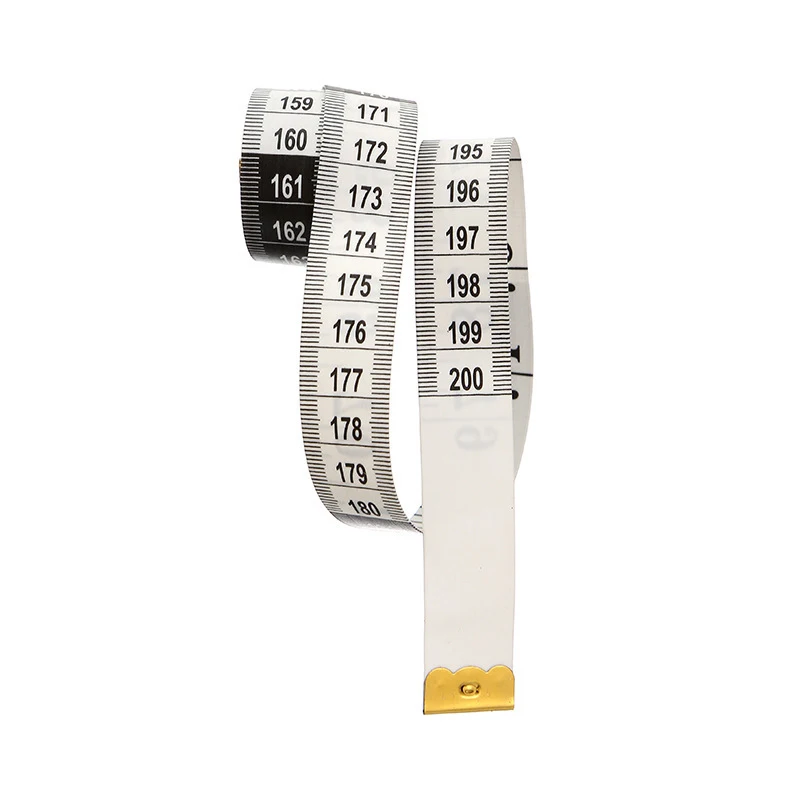 Innovative Features in Modern Tape Measures
Innovative Features in Modern Tape Measures
Locking Mechanism
Some body tape measures come with a locking mechanism that allows you to hold the measurement in place. This feature is particularly useful when taking measurements alone, as it eliminates the need for assistance and ensures accuracy.
Dual-sided Markings
Dual-sided tapes have measurements marked on both sides, making it easier to read measurements from different angles. This innovation enhances usability, especially when taking measurements in hard-to-reach areas or in low-light conditions.
Color-Coded Sections
Color-coded sections on tape measures help differentiate between various measurement points, such as waist, hips, and chest. This feature simplifies the measurement process and reduces the likelihood of errors, particularly for those new to using body tape measures.
Integrated Calculators
Some advanced body tape measures feature integrated calculators that allow you to convert measurements between units or calculate body mass index (BMI) directly on the tape. These smart features add convenience and functionality, making the tape measure a multifunctional tool.
Common Mistakes to Avoid
Measuring Over Clothing
One common mistake is measuring over bulky clothing, which can lead to inaccurate results. Always measure directly on bare skin or minimal clothing to ensure precision.
Not Keeping the Tape Level
Failing to keep the tape measure level can result in skewed measurements. Always ensure the tape is parallel to the ground and straight across all measurement points.
Using a Damaged Tape
Using a tape measure that is bent, stretched, or damaged can compromise accuracy. Regularly inspect your tape and replace it if you notice any signs of damage to maintain reliable measurements.
Rushing the Measurement Process
Taking measurements too quickly can lead to errors. Take your time to position the tape correctly and read the measurements accurately, ensuring consistent and precise results.
Practical Applications
Tailoring and Sewing
Tailors rely on body tape measures to create custom-fit garments. Accurate measurements ensure that clothes fit perfectly, enhancing both comfort and aesthetic appeal. From simple shirts to intricate dresses, precise measurements are fundamental in the tailoring process.
Fitness Tracking
Fitness enthusiasts use body tape measures to monitor changes in body composition, such as muscle growth and fat loss. Tracking measurements over time helps in assessing the effectiveness of workout routines and dietary plans, allowing for necessary adjustments to achieve fitness goals.
Healthcare Assessments
In healthcare, body tape measures are used to assess patient health metrics like body mass index (BMI), waist-to-hip ratio, and overall body composition. These measurements aid in diagnosing potential health issues and monitoring patient progress during treatment.
Home Projects and DIY
Body tape measures are also useful in various home projects and DIY activities. Whether you’re creating custom furniture, crafting, or measuring spaces for renovation, a reliable tape measure ensures accuracy and precision in your work.
Tips for Maximizing the Use
Regular Practice
Regularly using your body tape measure enhances your proficiency and ensures consistent accuracy. Practice taking measurements on yourself and others to become comfortable with different techniques and measurement points.
Keeping a Measurement Log
Maintaining a log of your measurements helps track progress and identify trends over time. Whether for fitness purposes or tailoring needs, a detailed log provides valuable insights and aids in making informed decisions based on your data.
Educating Yourself on Measurement Standards
Understanding standard measurement practices improves the accuracy and consistency of your measurements. Familiarize yourself with different measurement techniques and standards to ensure reliable results across various applications.
Investing in Quality Tools
Investing in a high-quality body tape measure pays off in the long run. A durable, reliable tape ensures consistent performance and accurate measurements, making it a valuable tool in your measurement arsenal.
The Evolution of Tape Measures
From Traditional to Modern Designs
Body tape measures have evolved significantly from their traditional designs. Modern innovations have introduced enhanced materials, digital features, and user-friendly functionalities that improve accuracy and ease of use. These advancements make body tape measures more versatile and accessible to a broader audience.
Integration with Technology
The integration of technology has transformed body tape measures into smart devices. Digital features, Bluetooth connectivity, and mobile app integration allow for seamless data management and analysis, catering to the needs of tech-savvy users who demand more from their measurement tools.
Sustainable and Eco-friendly Options
With growing environmental awareness, many manufacturers now offer eco-friendly body tape measures made from sustainable materials. These options appeal to environmentally conscious consumers looking to reduce their ecological footprint without compromising on quality or functionality.
 Future Trends in Tape Measures
Future Trends in Tape Measures
Enhanced Digital Features
Future body tape measures are likely to incorporate even more advanced digital features, such as real-time data syncing, AI-driven measurement analysis, and personalized health recommendations. These enhancements will further streamline the measurement process and provide users with actionable insights.
Increased Customization
Customization options will expand, allowing users to tailor their tape measures to specific needs. From adjustable markings and personalized measurement units to bespoke designs, future tapes will offer greater flexibility and personalization to cater to diverse user preferences.
Improved Durability and Materials
Ongoing advancements in materials science will lead to more durable and lightweight body tape measures. Innovations in flexible, stretch-resistant materials will enhance the tape’s longevity and performance, ensuring it remains a reliable tool for years to come.
Conclusion
A body tape measure is a versatile and essential tool for achieving accurate body measurements across various applications. By understanding the different types of tapes, selecting the right one based on your specific needs, and mastering proper usage techniques, you can ensure precision in every measurement. Additionally, maintaining your tape measure and avoiding common mistakes will enhance its longevity and reliability. Whether you’re tailoring garments, tracking fitness progress, or conducting health assessments, a body tape measure is indispensable in achieving your goals. Embrace the knowledge and techniques outlined in this guide to maximize the benefits of your body tape measure, ensuring accurate and reliable measurements every time.
